Summer and Out-of-School Time

Summer learning and out-of-school time (OST) programs are an important way to make up for lost instructional time, build relationships between students and teachers, engage the whole family and community, increase opportunities and address inequities, and prepare students and families for the next school year. Access resources on high-interest topics to plan your strategy, partnership, or program.
Timely Information
We are excited to introduce two new National Comprehensive Center resources that are designed to help you reflect and assess where you may benefit from additional support and connect you with organizations and resources that correspond to your needs and interests.
Summer and Afterschool Needs Assessment
The Summer and Afterschool Needs Assessment helps program leaders like you determine your needs and assets in program planning, staffing, student recruitment, partnership development, and other key areas that are essential for delivering a high-quality program.
Summer and Afterschool Resource Map
Once you know your needs, the Summer and Afterschool Resource Map provides evidence-aligned resources and tools, organized by the different planning areas, from a national-level list as well as a growing list of contributing states and communities.
Bright Ideas Across the Network

Facets of Sustainability for Summer and Afterschool Programs
Learn more about the Summer and Afterschool CoP as they deep dive into their sustainability frame, supported by the largest and most definitive study of district summer learning to date, to share ways to keep summer and afterschool education and enrichment programs thriving.
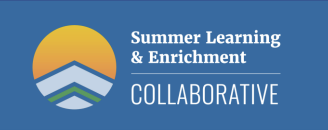
Out-of-School Programs Help Teens Transition to Careers
Did you know 3 out of 10 young people between the ages of 16 and 24 are neither working nor in school? In this tabletop discussion, a team of experts examined out-of-school programs that offer opportunities for career exploration and work-based learning for teens.

Partnership for Family Engagement in High-Needs Communities
Watch this webinar to learn how the Hillsboro School District developed partnerships in high-needs communities. Hear from community members and educators working together to support and lift their schools and students.
Getting Oriented to Accelerating Learning through Summer and OST
Below you will find research evidence and other helpful resources to orient you to this topic.
Use the navigation on the left to take a deeper dive.
Research Evidence and Policy
Multiple studies have documented the benefits of summer learning and OST programs. Studies show that effective summer programs: are voluntary; operate a full-day and last five to six weeks; include three hours of language arts and mathematics taught by a certified teacher each day; and include enrichment activities and experiences.
CCNetwork Resources
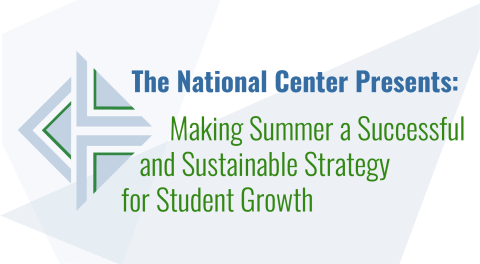
The National Center Presents: Making Summer a Successful and Sustainable Strategy for Student Growth
The National Center Presents… is a webinar series created to build awareness and knowledge among states and districts around high-leverage challenges, common needs, and evidence-based strategies and solutions related to focus topics. This series aims to support states and districts to build their awareness and knowledge around evidence-based strategies and solutions to address high-leverage challenges and common needs.
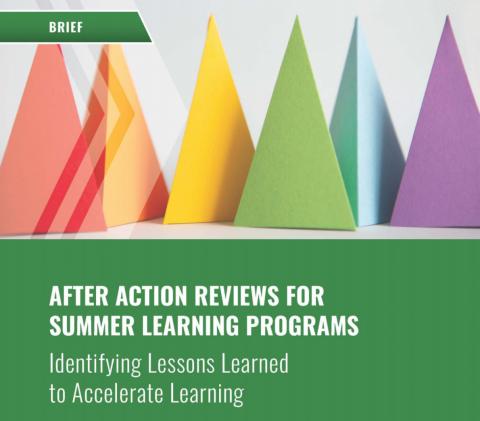
After Action Reviews for Summer Learning Programs

Advocating for Native Students: A Learning and Programming Toolkit
The National Comprehensive Center created this toolkit to support State Education Agencies (SEAs), Local Education Agencies (LEAs), and Tribal Education Departments (TEDs) when developing learning and programming that will advance education for Native students. The toolkit provides considerations and guidance for SEAs, LEAs, and TEDs to use when planning, implementing, and evaluating programming for Native students. SEAs, LEAs and TEDs should use the information in the toolkit in collaboration with each other to help ensure successful and effective programming for Native students.
External Resources
-
Afterschool Alliance Elevating the Voices of Youth for Advocacy and Change
This resource has been designed to be a collection of currently existing resources, spotlights of partners in the education and youth advocacy space, and useful definitions and terminology for this work. Additionally, in an attempt to model some of the promising practices outlined by currently existing resources, this piece is framed by direct recommendations of youth and has been supported by a youth advisory board that has contributed to, designed, and edited the final versions of this toolkit.
-
RAND - Investing in Successful Summer Programs: A Review of Evidence Under the Every Student Succeeds Act
This report provides information on the effectiveness of summer programs
-
RAND - Getting to Work on Summer Learning, 2nd ed.
This guidance is intended for districts that are interested in implementing or improving summer learning programs. The recommendations are based on comprehensive data from instructor and student surveys, interviews, and classroom observations.
-
Afterschool Alliance - The Evidence Base for Afterschool and Summer April 2021
This brief includes study findings that provide evidence that afterschool and summer programs have a positive impact on the academic and well-being of students.
-
RAND - The Value of Out-of-School Time Programs
This report highlights the benefits that can be expected from out-of-school time programs and provides recommendations for policy and practice.
-
The Wallace Foundation - Summer Learning Planning Resources and Toolkit
The toolkit provides over 50 evidence-based tools and resources in the five planning areas: planning and management, academics and enrichment, staffing and professional development, site climate, and student recruitment and attendance.
-
U.S. Department of Education - ED COVID-19 Handbook, Volume 2
This guidance is intended to help school leaders and educators as schools reopen.
School-Community Partnerships
Partnerships between schools and community-based organizations are an effective way to provide students with access to high-quality OST academics and enrichment. Successful partnerships feature an inclusive and cohesive planning team, including principals, that is dedicated to creating an integrated program and maximizing funding and staffing.
Tips
Communication, accountability and transparency are essential. When defining your vision for partnership, discuss whether it will include:
- Shared professional development
- Delivery of wrap around services and youth enrichment
- Space sharing to expand opportunities for learning and engagement
- Shared staff to maximize capacity and tap into different expertise
- Coordinated services to meet youth and families’ economic, health, food, and other needs
CCNetwork Resources

Building School-Community Partnerships to Advance Equity

Meeting Whole Student and Family Needs Through Collaborative Partnerships at School

In it Together: Maximizing Partnerships Between Education and Workforce to Support High School Students

Creating a Collaborative Site Climate

Creating Authentic Partnerships with Historically Marginalized Families and Communities
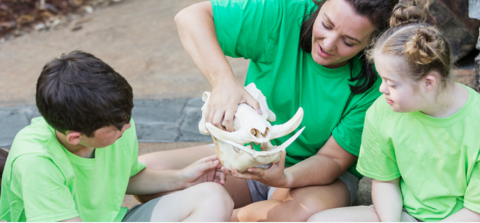
Working with Parent Centers to Engage Families of Students with Disabilities in Summer Learning and Enrichment Programs

Strengthening Year-Round, Out-of-School Programming

Establishing Data Sharing Agreements Between Community Based Organizations and Schools
External Resources
-
Afterschool Alliance - Community Learning Hubs
This website includes a wealth of information about the ways in which community learning hubs support students and their families.
-
U.S. Department of Labor - Career Pathways Toolkit: An Enhanced Guide and Workbook for System Development
The toolkit includes an introduction, resources, and six Key Elements of Career Pathways. The toolkit is aligned with the requirements of the Workforce Innovation and Opportunity Act (WIOA).
Learning and Enrichment Strategies
By studying the characteristics of successful summer learning programs, researchers have identified a number of evidence-based practices in program design and delivery.
Tips
- Adapt summer instructional materials before distributing to teachers so that lesson plans fit the amount of instructional time available
- Meet student needs
- Align to school-year standards
- Provide strategies for differentiation, including lesson plans and activities for students who need more practice and those who need more advanced material
- Encourage instructional leaders to observe instruction and provide real-time feedback
CCNetwork Resources

Summer Programming and Resources for Families to Prepare Young Children for Success in Early Education

Powerful Interventions: The Evidence for Incorporating High-Dosage Tutoring in Summer Programs

Vacation Academies: High-Power Learning in Short-Time Blocks

Summertime Arts Learning for PreK-12 Students
External Resources
-
Annenberg Institute at Brown University - Accelerating @Student Learning with High-Dosage Tutoring
This brief provides design principles for effective tutoring based on research evidence.
Attracting and Supporting Staff
Just like during the school year, the quality and characteristics of staff in OST programs impact student outcomes and experiences. OST programs can be a pathway to diversify the pool of educators who work with students.
Tips
- Recruit and retain a mix of staff who are connected to the local community and local schools
- Employ current and aspiring classroom teachers, youth development professionals, and community members with content expertise
- Encourage all staff to participate in the same training and professional development
- Ensure consistent, high-quality engagement with young people
- Consider incentives to help educators maintain their energy and enthusiasm
CCNetwork Resources

Collaborating to Staff Summer-Learning Programs: Leveraging Partnerships

Working Together: Recruiting, Training, and Supporting Staff Members for Impactful Summer Learning
External Resources
-
The Wallace Foundation - Tips for Planning High-Quality Professional Development
This tip sheet provides best practices to maximize professional development for summer learning program staff.
-
National AfterSchool Association - The Out-of-School Time Leader’s Guide to Equitable Hiring and Staff Development Practices
This Guide includes three sections: recruitment and hiring, onboarding and professional development, and performance reviews and feedback. It includes best practices and resources to increase equity and mitigate bias in OST programs.
Addressing a Range of Student Needs
Summer learning and OST leaders should plan and implement academic and enrichment programs adapted to varying learning needs and educational circumstances.
Tips
- Meet the social and emotional needs of all learners
- Cultivate a positive learning climate
- Ensure that all students have a “friend from day one” in the program
- Design activities to build meaningful connections among students and/or between students and staff
- Consider programs that prioritize specific populations, such as English learners, rural learners, and students with disabilities
CCNetwork Resources

Supporting Vulnerable Students Through Multiagency Coordination

Serving Students with Moderate and Severe Disabilities in Summer Programs

Addressing Students’ Social-Emotional and Mental Health Needs

Supporting All Students: Best Practices for Engaging and Serving Older, High School Youth This Summer
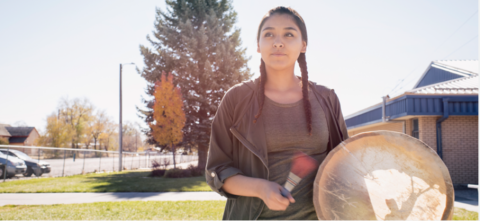
Tailoring Supports For Rural & Tribal Youth
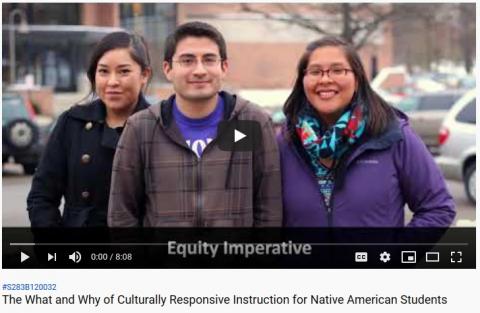
Culturally Responsive Instruction for Native American Students
External Resources
-
National Center on Deaf-Blindness - Preparing the Learning Environment: NCDB Practice Guide
This Practice Guide helps practitioners prepare learning environments for children who are deaf-blind.
Student Recruitment and Attendance
High attendance in summer learning programs leads to measurable benefits in math and reading for students. First communicate with families about program offerings that appeal to their needs and interests. A thoughtful marketing and recruitment strategy, with a continued emphasis on attendance, will benefit students the most.
Tips
- Involve key stakeholders (principals, teachers, youth, and families) in the planning process
- Seek understanding of stakeholders needs and interests
- Develop an intentional recruitment strategy
- Use aspirational messaging to highlight the features of the program
- Communicate about how students will benefit
CCNetwork Resources

Keep Them Coming: Attendance as the Key to Summer Learning

Reaching The Hard-To-Reach: Engaging Homeless Children and Families in Summer Programs
External Resources
-
The Wallace Foundation - Summer Learning Recruitment Guide
The Guide provides lessons learned about parents’ attitudes toward summer learning, eight keys to successful outreach and recruitment, recruitment tactics, and recruitment templates and examples that can be used by others.
Finance and Budgeting
Careful resource planning and allocation ensures that summer and afterschool programs are spending funds on the things that matter the most.
Tips
- Commit to a multi-year funding plan to avoid a fiscal cliff for OST programs
- Consider the total of ARP funds to be disbursed through 2024
- Implement a step-down funding model each year
- Use the cost-per-student per-hour calculation to assess various program delivery models
- Dedicate sufficient resources to ensure quality and fidelity
CCNetwork Resources

Maximizing Effective Use of Fiscal Resources

Linking Spending with Outcomes for Summer and Beyond
External Resources
-
U.S. Department of Education - Frequently Asked Questions: Elementary and Secondary School Emergency Relief Programs Governor's Emergency Education Relief Programs
This document answers questions about how funding may be used to respond to COVID-19 impacts on pre-K-12 students.
-
The Wallace Foundation - Summer Learning Toolkit: Summer Budget Guidance
This document explains the summer budget tool and how it can be used. Tips for developing an effective budget are also included.
-
The Wallace Foundation - Out-of-School Time Cost Calculator
This online calculator can determine costs for afterschool and summer programs.